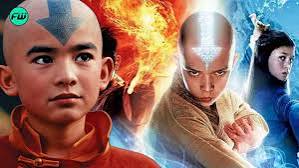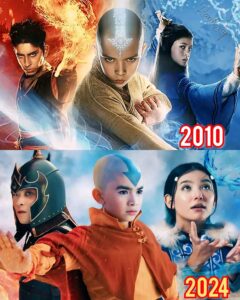
Exploring The Last Airbender: A Cinematic Evolution from 2010 to 2024
Exploring The Last Airbender: A Cinematic Evolution from 2010 to 2024
Introduction:
Since its release in 2010, M. Night Shyamalan’s “The Last Airbender” has been a subject of much debate among fans of the beloved animated series. Now, with the recent surge in reboots and adaptations, it’s time to revisit the world of bending and see how the scenes and visual effects have evolved over the years. Join us as we compare and contrast key scenes from the original movie with the latest adaptation in 2024, taking the #BOOMchallenge head-on.

Scene 1: Introduction to Aang
In the 2010 version, the introduction of Aang, the last Airbender, lacked the grandeur and mystique of the animated series. The CGI effects felt stiff and disconnected from the character, failing to capture his youthful energy and playful demeanor. Fast forward to 2024, and we’re greeted with a revamped introduction that brings Aang to life in stunning detail. The CGI is seamless, allowing us to feel the breeze as he effortlessly glides through the air, setting the tone for an epic adventure.
Scene 2: The Battle at Kyoshi Island
One of the most iconic scenes in “The Last Airbender” is the battle at Kyoshi Island. In the 2010 movie, the fight sequences felt choreographed and lacked the fluidity and intensity of the animated series. The bending movements seemed restricted, with the CGI effects appearing outdated and unconvincing. However, in the 2024 adaptation, the battle comes alive with dynamic camerawork and improved CGI. Each bending move is executed with precision, and the action feels fast-paced and exhilarating, keeping viewers on the edge of their seats.
Scene 3: Zuko’s Redemption
Zuko’s journey from antagonist to anti-hero is a central theme in “The Last Airbender.” In the 2010 movie, his redemption arc felt rushed and underdeveloped, with key moments glossed over in favor of advancing the plot. As a result, his character lacked depth and emotional resonance. Contrastingly, the 2024 adaptation delves deeper into Zuko’s internal struggle, giving viewers insight into his motivations and inner turmoil. Through subtle facial expressions and nuanced performances, we witness Zuko’s transformation in a more authentic and compelling manner.
Scene 4: The Final Confrontation
The climactic showdown between Aang and Fire Lord Ozai is the ultimate test of strength and courage. In the 2010 movie, the final confrontation felt anticlimactic, with lackluster CGI and uninspired choreography detracting from the epic scale of the battle. Conversely, the 2024 adaptation delivers a visually stunning spectacle that surpasses expectations. The CGI effects are top-notch, creating breathtaking displays of bending prowess that leave audiences in awe. With enhanced choreography and impactful storytelling, the final confrontation becomes a memorable highlight of the film.

Conclusion:
The evolution of “The Last Airbender” from 2010 to 2024 is a testament to the power of cinematic storytelling and visual effects. While the original movie had its flaws, the latest adaptation has successfully revitalized the beloved franchise, capturing the spirit and essence of the animated series in ways previously thought impossible. As we continue to witness advancements in technology and filmmaking techniques, one thing remains clear: the world of bending will forever hold a special place in the hearts of fans old and new. #BOOMchallenge accepted and conquered.
Leave a Reply